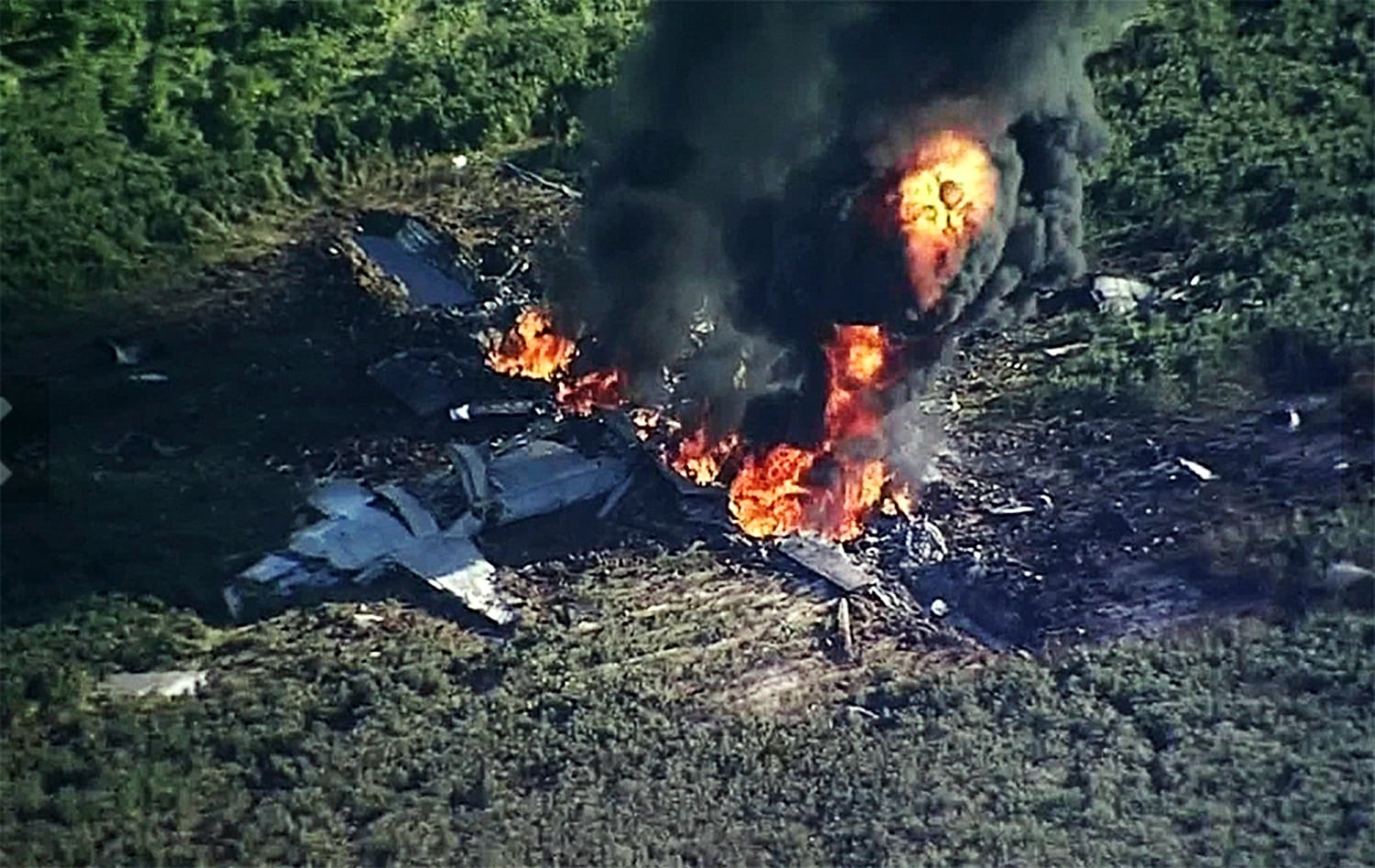JACKSON, Miss. — Military investigators are trying to piece together the cause of a crash that killed 15 Marines and a sailor in Mississippi in July, but it could be a year or more until any information becomes public.
In the meantime, the Marine Corps’ fleet of KC130T transport planes remains grounded. That plane is similar to the one that crashed near Itta Bena on July 10.
April Phillips, a spokeswoman for the Naval Safety Center, said Monday that final reports often don’t become public for 12 to 18 months following a crash. Even then, much of the information in the reports is often withheld from public view.
“Ours are done solely to ensure what happened doesn’t happen again,” Phillips said, saying that various military commanders must endorse the report before it’s finished.
Marines and other investigators finished collecting debris Aug. 3, recovering all of the plane’s major components, said Marine Forces Reserve spokeswoman Lt. Stephanie L. Leguizamon. She said last week that there’s still work going on to clean up the crash area.
Naval Safety Center investigators are both reconstructing the wreckage and interviewing witnesses. Their report will ultimately include recommendations to enhance safety.
Victims included nine Marines based at Stewart Air National Guard base in Newburgh, New York, who flew and crewed the plane, plus six Marines and a Navy Corpsman from an elite Marine Raider battalion at Camp Lejeune, North Carolina. The passengers were headed for pre-deployment training in Yuma, Arizona. Cargo included at least some ammunition.
Brig. Gen. Bradley S. James has told reporters that whatever went wrong began when the plane was at cruising altitude. Most of the plane pancaked upside down into a field, but part of it, including the cockpit, broke off and landed far from the fuselage and wings. Debris was scattered for miles over fields, woods and ponds.
Witnesses said they saw the plane descend from high altitude with an engine smoking, with some describing what pilots call a “flat spin,” where a plane twirls around like a boomerang.
Phillips said the plane didn’t have an in-flight data recorder. That, plus the lack of survivors, could make the debris crucial to determining what happened.
“A lot it, in this case, is likely to come from forensic evidence,” she said.
Phillips said the C-130 and its variants have historically been one of the safest planes operated by the Marine Corps. The Navy classifies its most serious incidents as Class A mishaps, involving death, permanent disability or more than $2 million in damage. Only two in-flight Class A mishaps were recorded before the Mississippi crash, both in 2002. A KC-130R experienced a flash fire and crashed into a mountain in Pakistan while nearing an airfield, killing seven people. A KC130F crash landed shortly after taking off in California, causing injuries but no deaths.
The New York squadron is the last Marine unit flying the KC-130T version and is scheduled to upgrade to a newer version in 2019. Only the remaining 12 KC-130Ts are affected by the grounding.
An earlier version of this story was corrected to show 15 Marines died in the plane crash, not 16.




